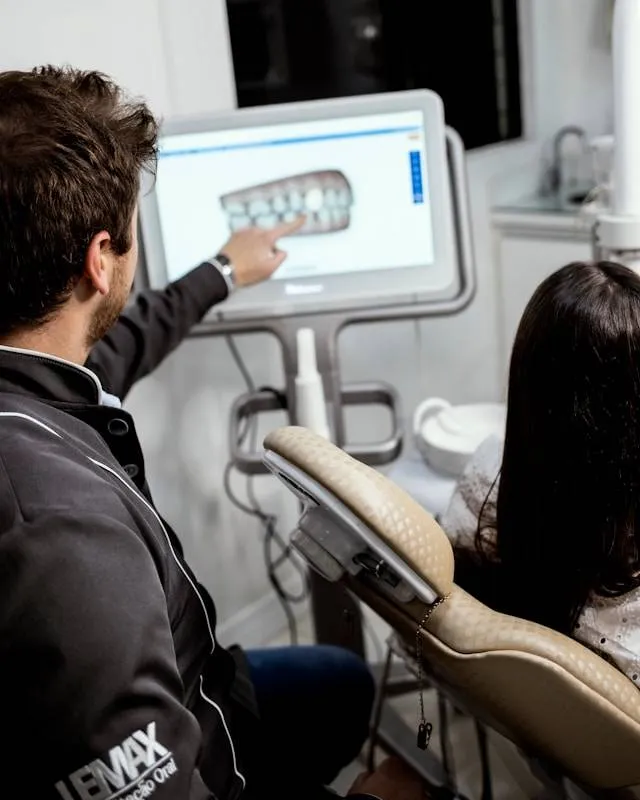1. Introduction: Overview of braces and the importance of choosing the right type
Dental braces are a dental treatment that helps improve the position of teeth and jaws, bringing a more beautiful and confident smile. Currently, there are many different types of braces, each with its own advantages, disadvantages and costs. Choosing the right type of braces suitable for your oral condition, needs and financial conditions is extremely important to ensure a successful and effective treatment process.
Summary: What are braces and why are there different types?
Braces are an orthodontic treatment that uses appliances to move teeth into the desired position. There are many different types of braces because each person has different dental conditions and different aesthetic requirements.
2. What are braces and who needs braces?
Braces are an orthodontic treatment method that uses dental appliances (such as brackets, wires, and aligners) to apply force to the teeth, helping them move to the correct position on the jaw.
Common dental problems requiring braces
buck teeth
Crooked and crowded teeth
Gap teeth
Malocclusion (deep bite, open bite, cross bite)
Early loss of baby teeth
Benefits of braces
Improve facial and smile aesthetics
Improve chewing function
Improve pronunciation
Reduce the risk of oral diseases (tooth decay, gingivitis, periodontitis)
Increase confidence
3. Factors to consider when choosing braces
When choosing braces, you need to consider the following factors:
Complexity of dental problems
Your oral health will determine which type of braces are best for you. Complex cases may require traditional braces (metal braces), while simpler cases may benefit from cosmetic methods (Invisalign).
Budget
Cost is an important factor to consider. Different types of braces come in different price ranges. Metal braces are usually the most economical option, while Invisalign is the most expensive.
Aesthetic factors
If you're concerned about aesthetics, you can choose less visible braces like ceramic braces, lingual braces, or Invisalign.
Comfort
Some types of braces can be more uncomfortable than others. For example, metal braces can rub against your lips and cheeks, causing pain. Invisalign is often more comfortable because the aligners are made of soft plastic.
Treatment time
Treatment time can vary depending on the type of braces and the complexity of the dental problem.
4. Popular types of braces today: Advantages, disadvantages, and costs
Advantage:
Highly effective, can treat most cases
Lowest cost compared to other types of braces
Durable, less likely to break
Disadvantages:
Not very aesthetic, easily exposed
May cause irritation, rubbing against lips and cheeks
Difficulty cleaning teeth
Cost: About 25,000,000 - 45,000,000 VND
Ceramic braces
Advantage:
More aesthetic than metal braces, less visible
Treatment effectiveness equivalent to metal braces
Disadvantages:
Costs more than metal braces
Ceramic braces are more fragile than metal braces.
The bowstring is still metal so it can still be seen.
Cost: About 35,000,000 - 55,000,000 VND
Self-ligating braces
Advantage:
Reduces friction between the archwire and brackets, helping teeth move faster
Fewer follow-up visits than with traditional braces
Easier to clean
Disadvantages:
Costs more than traditional braces
Cost: About 40,000,000 - 60,000,000 VND
Lingual braces
Advantage:
High aesthetics, completely invisible
Disadvantages:
Highest cost compared to other types of braces
The most difficult to clean teeth
Can cause difficulty in pronunciation
Requires highly skilled physician
Cost: About 80,000,000 - 120,000,000 VND
Invisalign
Advantage:
Highly aesthetic, almost invisible
Easy to remove, convenient for eating and oral hygiene
More comfortable than braces
Disadvantages:
High cost
Suitable for mild to moderate cases only
Requires high patient compliance
Cost: About 45,000,000 - 100,000,000 VND
Invisalign (Trainer, removable appliances)
Advantage:
Use for children in mixed dentition stage
Adjust bad habits
Guide teeth to grow in the right position
Low cost
Disadvantages:
Only effective in mild cases
Need children's cooperation
Cost: About 5,000,000 - 15,000,000 VND
5. Detailed comparison of braces types: Summary table
| Features | Metal braces | Ceramic braces | Self-ligating braces | Inside | Invisalign | Trainer function |
| Effective | High | High | High | High | Medium | Short |
| Aesthetics | Short | Medium | Medium | High | High | Medium |
| Comfortable | Short | Medium | Medium | Short | High | High |
| Expense | Short | Medium | Medium | High | High | Short |
| Time | Medium | Medium | Short | Long | Medium | Long |
| Toilet | Difficult | Difficult | Easy | Very difficult | Easy | Easy |
6. Standard medical braces procedure
Examination and consultation
The doctor will examine your oral health, assess the complexity of the problem, and advise on the appropriate type of braces.
Diagnosis (X-ray, dental impression)
X-rays help your doctor evaluate your jawbone structure and tooth position. Imaging is used to create a model of your jaw and plan your treatment.
Treatment planning
The doctor will make a detailed plan about the treatment time, teeth adjustment steps, and costs.
Attach braces/ wear braces
Your dentist will attach brackets to your teeth (for braces) or show you how to wear aligners (for Invisalign).
Re-examination and adjustment
You need to have regular check-ups (usually every 4-8 weeks) so that your doctor can check your treatment progress and adjust the wire tension or replace the braces.
Maintenance phase
Once your teeth have moved into the correct position, you will need to wear a retainer to keep them in place.
7. Proper dental care when wearing braces (for all types)
Detailed instructions for oral hygiene
Brush your teeth at least twice a day with a soft-bristled toothbrush and fluoride toothpaste.
Use dental floss to clean between teeth and around braces.
Use an interdental brush to clean hard-to-reach areas between teeth.
Rinse mouth with salt water or specialized mouthwash.
Proper diet
Limit sweets and carbonated drinks.
Avoid hard, chewy, sticky foods.
Cut food into small pieces before eating.
Important Notes
Do not remove braces or aligners on your own.
Tell your doctor immediately if there are any problems (eg, loose brackets, broken wires, toothache).
Re-examination on time.
8. Frequently asked questions (FAQ) about braces
Which type of braces is best for me?
The best type of braces depends on your dental condition, aesthetic needs, budget, and comfort. Consult your orthodontist for specific advice.
Does braces hurt?
You may experience some soreness or discomfort after having your braces fitted or your archwires changed. However, this usually doesn’t last long and can be relieved with over-the-counter pain medication.
How long does it take to get braces?
The length of time you spend in braces depends on the complexity of your dental problem and the type of braces you choose. Typically, braces last between 1-3 years.
9. Choose a reputable dental clinic for braces
Criteria for evaluating reputable dentistry
Licensed to operate
Team of highly qualified and experienced doctors
Modern equipment
Dedicated customer care
Reasonable and transparent prices
Questions to ask your orthodontist
Does the doctor have experience treating cases similar to mine?
Which type of braces is best for me?
How long is the expected treatment time?
How much does the treatment cost?
Are there any possible risks or complications?
10. Possible complications when wearing braces and how to prevent them
Some complications that can occur when wearing braces:
Tooth decay: Due to difficulty in cleaning teeth. Prevent by brushing thoroughly and flossing regularly.
Gingivitis: Caused by plaque buildup around braces. Prevent by proper oral hygiene and rinsing with salt water.
Root resorption: Occurs when the pulling force is too strong. Prevent by choosing an experienced dentist and following the dentist's instructions.
Temporomandibular joint pain: Due to malocclusion. Prevent by adjusting the traction properly and doing jaw muscle relaxation exercises.





